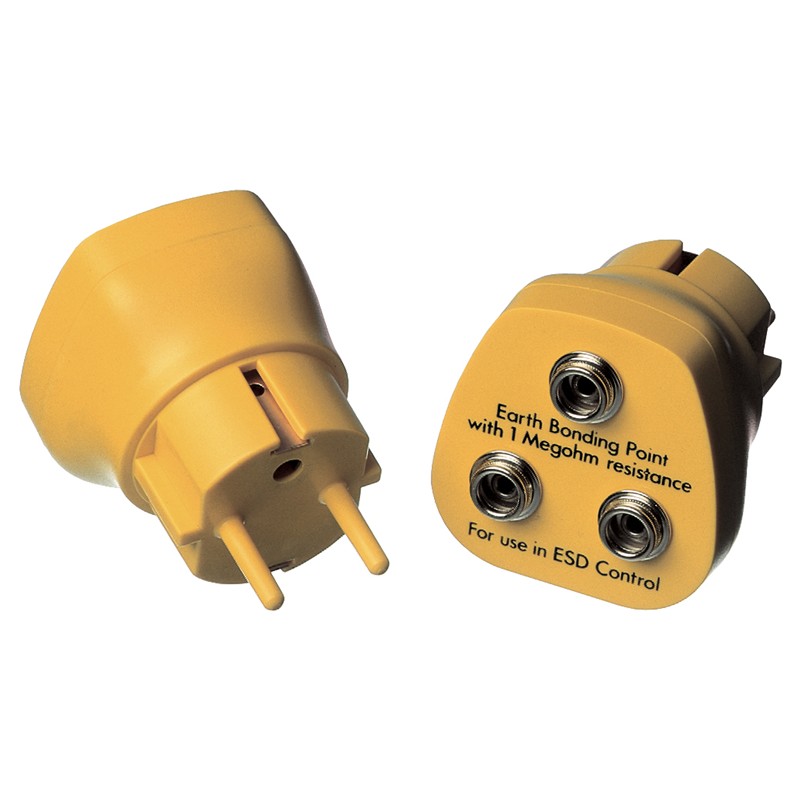ESD protection is a huge subject, with many differing opinions - e.g. partly because a technique which is successful in some situations, is not successful in others, leading to disagreements especially when all the differences between those situations are not disclosed. Also, just because someone has not knowingly caused ESD damage to equipment, does not necessarily mean that they are using enough ESD prevention. Not all ESD damage will be noticed immediately afterwards...
Although there are some documented standards for ESD control programmes (including ANSI/ESD S20.20 which I mention below) it is also possible for companies to enforce different requirements than those listed in the various standards. There is no guaranteed "one size fits all" set of ESD procedures, especially when cost and practicality are considered, as well as effectiveness.
However for a typical commercial ESD workbench, there is an answer to your question - with some caveats:
My real question is if theres a problem with that connection, because the ESD sockets already have 1Mohm and the EU plug have another 1Mohm, that connection will make a 2Mohm resistance. Plus if i use a wrist band with another 1Mohm resistor that result in a final 3Mohm to earth.
Will that decrease the effectiveness? or will be just fine?
As you suspected, there will be a very small reduction in effectiveness due to the higher 3 MΩ resistance to ground, compared to a 1 MΩ resistance.
However, you should also consider the wider context. Both ANSI/ESD S20.20 and IEC 61340-5-1 give an upper limit for the resistance of the "wrist strap system" of 35 MΩ (often written as 3.5 x 10E7 Ω or 3.5 x 107 Ω in those and other ESD-related documents). That resistance limit is from the hand of the person, via their skin, wriststrap cuff, built-in 1 MΩ resistor, wire etc., all the way to ground.
Therefore as you can see, increasing the resistance in the wiring from 1 MΩ to 3 MΩ is very unlikely to cause the total resistance to ground (RTG in the documentation) to exceed 35 MΩ. You should be fine :-)
Strictly, the "daisy-chaining" of the workbench grounding points shown in your diagram does not meet best practice guidelines. Better is to create an ESD "common grounding point" (sometimes called "common point ground") for the whole workbench, and use "star connections" from each workbench grounding point, to the common grounding point. You will see that recommended in detailed ESD workbench guidelines e.g. figure 4-2 in the NASA document I mention below.
Also, before using the earth pin of your power socket as your ESD ground, ideally you would want to ensure that this really is a good earth connection e.g. not a high resistance, not swapped earth-to-neutral due to faulty wiring etc.
Overall, there are many other factors in creating and regularly testing a "best practices" ESD installation - too many factors to include here. As an example of a full set of ESD documentation, here is the "NASA Langley Research Center (LaRC) Procedures and Guidelines for Electrostatic Discharge (ESD) Control of ESD-Sensitive (ESDS) Devices Program". Very little of that is specific to spacecraft; almost all is applicable in a commercial situation too.
The organisation of the EOS/ESD Association website sometimes changes. As of January 2021, you can download a free "watermarked" copy of the current version of their ANSI/ESD S20.20 standard (ANSI/ESD S20.20-2014) as follows:
Go to the following page in their "store":
https://www.esda.org/store/standards/product/30/ansiesd-s20-20-2014
Click the box marked "COMPLIMENTARY DOWNLOAD" and choose a language from the pop-up list.
Another pop-up will appear, requiring entries in the fields for first & last names and email address.
After completing those fields, click the "DOWNLOAD" link and the PDF file download will start.



